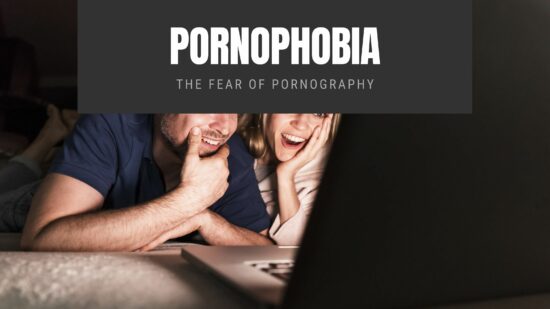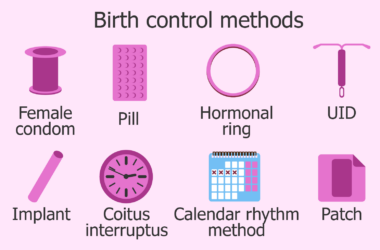Pornophobia is the intense and irrational fear of pornography. To some degree, Pornophobia is the opposite of porn addiction, such that it is a strong aversion to pornography (images or films).
This feeling results from guilt and fear that have been learned and nursed due to upbringing, moral views, and social pressures.
For instance, if you had a religious upbringing where sex is regarded as a ‘sin’ or demeaning. Like all phobias, no matter what the object of fear is, it puts its sufferer in a state of fear and anxiety. Pornophobia is no different in this sense.
Even when the object of fear may seem reasonable and poses no danger, the person who has pornophobia knows too well that the anxiety they are experiencing is real enough and can’t be ignored.
Psychologists believe that our minds are more than capable of producing a real biological reaction even without being exposed to the object of fear.
As long as the person with pornophobia believes that the object or condition is stressors, they will experience real anxiety and panic.
Most people who have pornophobia recognize that their fear is not reasonable but continue to experience it regardless of that fact.
Table of Contents
Symptoms of Pornophobia
The symptoms of Pornophobia are very similar to other specific phobias and will often include:
- Panic attacks
- Inability to relax
- Problems concentrating
- Being easily tempered
- Feelings of dizziness
- Prickly sensations like pins and needles
- Palpitations
- Aches & pains
- Fatigue
- Dry and sticky mouth
- Sweating excessively
- Breathlessness
- Migraines and headaches
Pornophobia symptoms are generally automatic and uncontrollable. They seem to take over a person’s thoughts, which frequently leads to them taking extreme measures to avoid the feared object or situation.
These are known as “safety” or “avoidance” behaviors.
Unfortunately, for the sufferer, these safety behaviors reinforce the phobia instead of controlling it.
Causes of pornophobia
Pornophobia may result from negative emotional experiences or physical punishment that can be either directly or indirectly linked to pornography. Over time, the sufferer accepts it and learns to live with it.
In many cases, pornophobia may worsen over time as the sufferer comes up with more sophisticated safety behaviors and routines to avoid it.
The good news is that there’s hope for people who have the phobia, and some treatment options could include any of the following…
Treatment of Pornophobia
Pornophobia can be life-limiting when severe. This condition tends to interrupt a sufferer’s day-to-day activities, affecting their social and occupational health.
Fortunately, treatment options could include a variety of methods.
Similar to other phobias, pornophobia does not have any available treatment guaranteed to work. However, consulting a therapist may help the patient recover from this condition.
Therapy for Pornophobia
Psychologists can offer a range of different psychological treatments for pornophobia, including cognitive-behavioral therapy (this is to help identify unhelpful and harmful thought patterns) and talking therapies, which are based on talking about your feelings, thoughts, and emotions.
There are psycho-dynamic applications to therapy where more emphasis is on the relationship between the client and the therapist as the fundamental drive for change.
Cognitive Therapies
Cognitive Behavioural Therapy (CBT) and the Changing Limiting Beliefs (CLB) programs tend to address the symptoms of pornophobia as being due to ‘unhelpful thinking styles‘ or patterns of thinking that directly produce the feelings of anxiety and stress when the sufferer comes in contact with the object or situation that causes uneasiness.
These types of therapy are frequently referred to as ‘brief’ or ‘directive’ therapies, and they are used to focus on the thought pattern occurring at the very moment rather than as the result of an ‘experience.’
This relationship between thinking (cognition) and feelings (behavior) is the core foundation of this cognitive therapy and is supported by a notable body of scientific evidence.
Psycho-Dynamic Therapies
Psychoanalysis involves different approaches as they review the influences and events experienced in the earlier formative lives of the sufferer that can cause, or at least “pre-dispose,” a person to suffer in a specific way later on in life.
The goal of psychodynamic therapy is to assist a person in diving in, exploring, comprehending, and resolve these causative issues following the theory of “cause” and effect.
In this therapy, the therapist/client relationship is essential in discovering and designing possible solutions to problems.
Psychologists believe that laid-back therapy should collaborate between therapist and client to achieve the desired goal, and that is to overcome the phobia.
Ultimately, the best form of treatment is therapy. If you think you’re dealing with pornophobia, it’s best to consult with a therapist or get one if you don’t have one.






